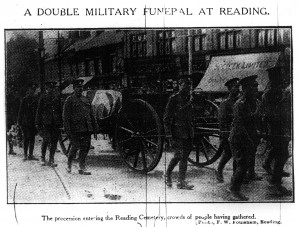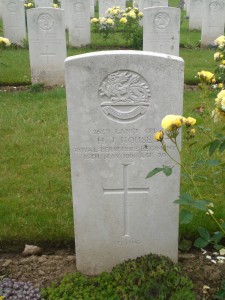Oswald Leopold House
Private 2718 “D” Company
1st/4th Battalion Royal Berkshire Regiment
Division 41
Oswald Leopold House , was the son of Frederick Arthur and Emily Maria House, of 42, Edinburgh Road, Reading. The 1911 census gives Oswald’s occupation as a scholar, he wasthe 14 years old. Oswald was the youngest child of his parents he had two older sisters,his father was a Law Writer. Ancestry UK also indicated that his 1914 – 15 star has been found in a car boot sale by Andrew Hadden.
Oswald Housewas killed in action on the 14th August 1916, aged 19. He has no known grave and is commemorated on the Thiepval Memorial to the Missing, Somme. Pier and Face 11D.
The following account summarised from Battalion history outlines and attack which took place on 12th August 1916. Oswald House was almost certainly involved in this attack and the role of “D” company is given. It is possible that he was killed in this action but because his body was not found that the date of the 14th was reported to parents. Or, he could have survived this major action and been killed in the preparations for an attack on Thiepval attack which was planned for the 18th August 1916.
On the night of the 12th August the 5th battalion Royal Berkshire Regt., who were close by, took the enemy by surprise and seized “Ridge Trench” on the crest of the hill. Next morning the 5th Battalion were relieved by the 4th Oxfords with the 1st/4th’s in support. At 9.30p.m. the Oxfords gave notice that the Germans were trying to bomb them out of the trench. Two platoons from the Berkshire battalion, numbers1 and 2, were sent forward to supply the Oxfords with bombs. “D” company was put under the command of the Oxfords Colonel with a further supply of bombs. The Oxfords were due to lead a counter attack but it was the 1st/4th who were eventually given the command to lead. In a manner typical in the chaos of the war, a barrage planned for before the attack did not take place and later, without detailed orders, the Berkshire men tried to cross the 250 yards of open ground facing the Germans. The Germans, relatively safe and protected in their trenches, were able to shoot unhindered on the advancing lines of men. The image is one frequently painted during the Great War. For the survivors of the attack, shelter was poor but fortunately a British aeroplane responded to signal flares and as a result British artillery opened up on the German trenches and the remaining Berkshire men were able to get to safety. Losses for this flawed action were very high, 140 casualties from the ranks including 59 killed and missing. Petre comments in his account that, “Failure is often more heroic than success, and these loyal men fought and died with great honour”.




